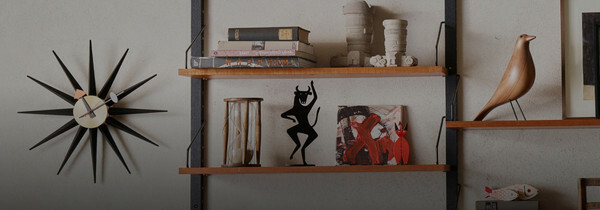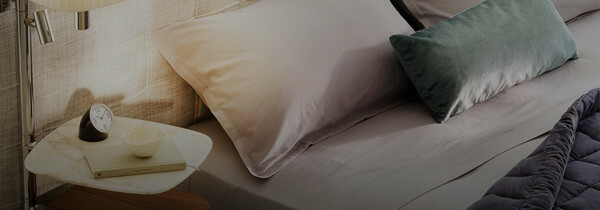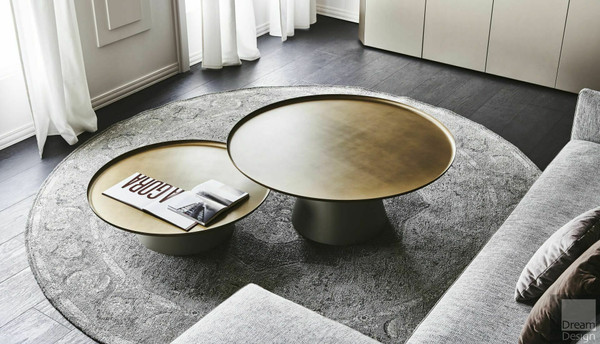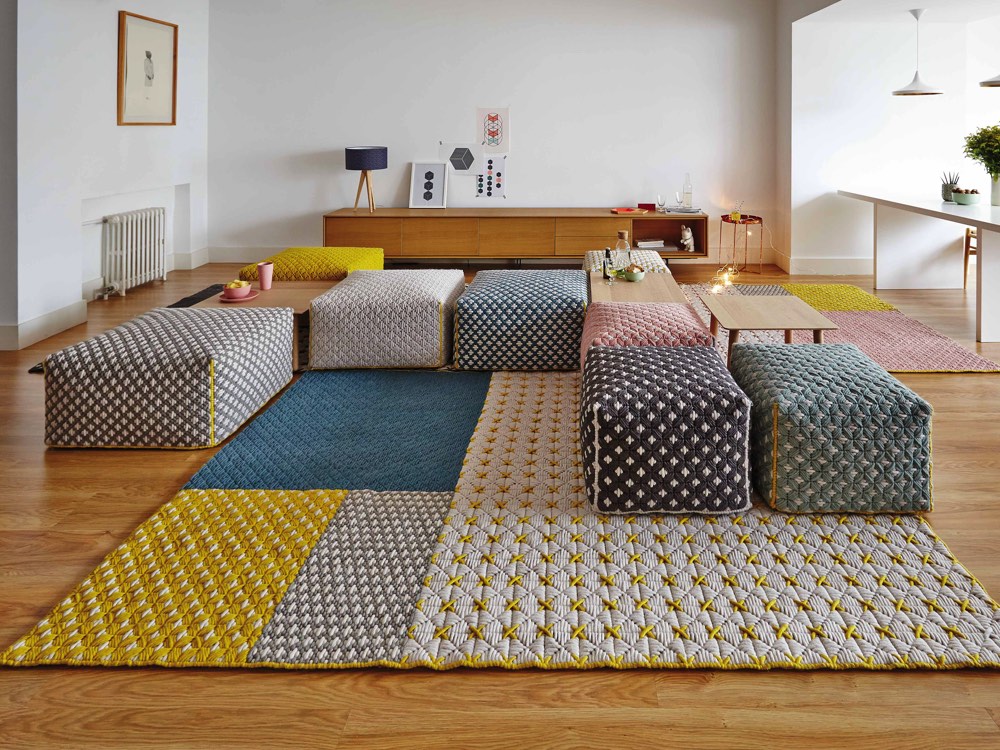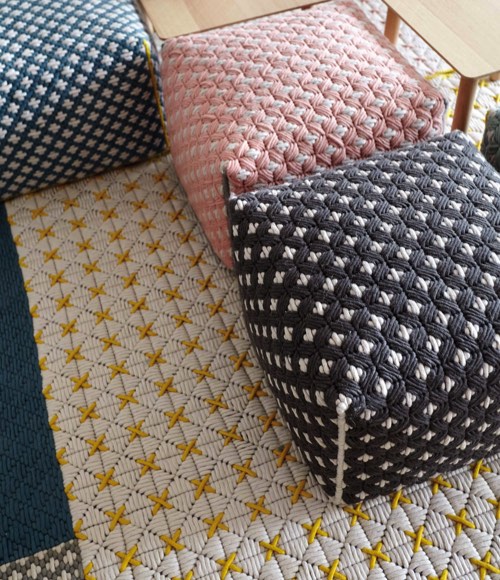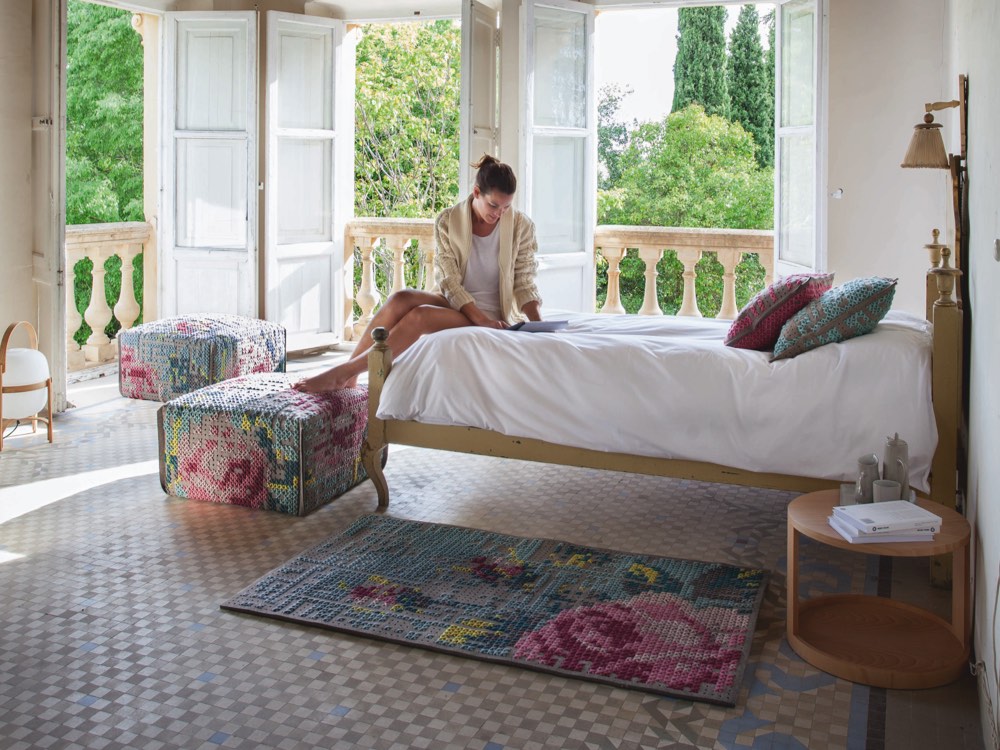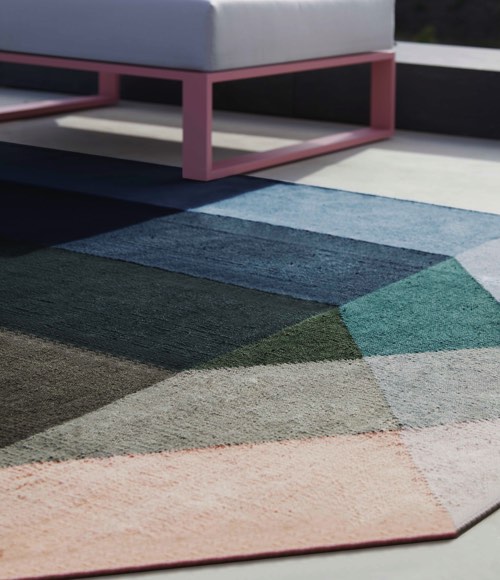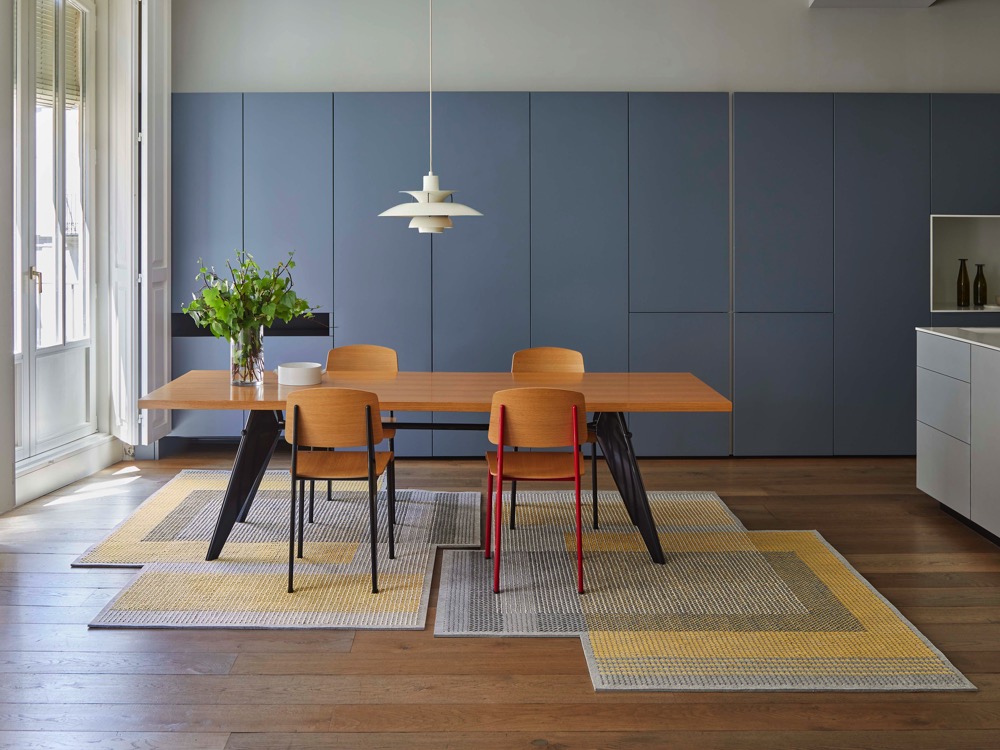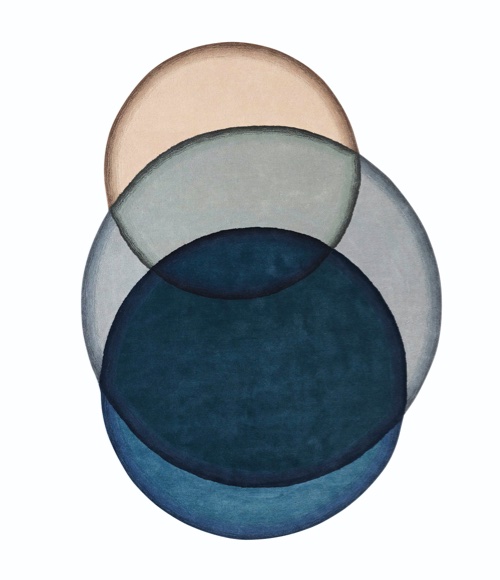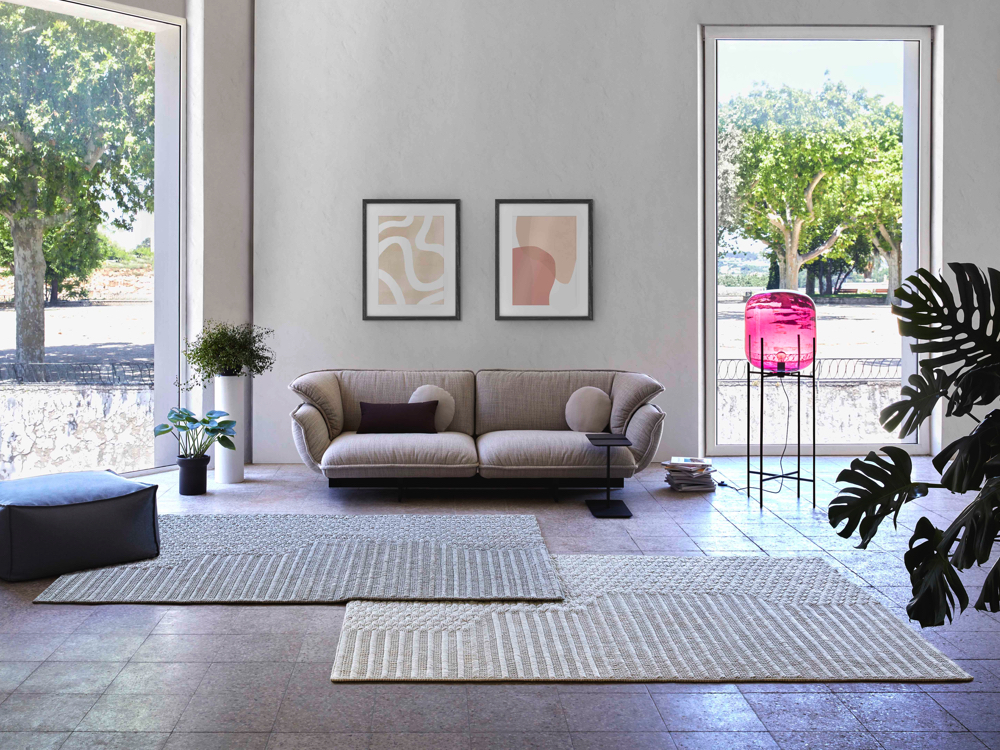
In Conversation With: Charlotte Lancelot
You’ve probably heard of the adage “if it doesn’t exist, create it”. In our entrepreneurial age, this nugget of internet wisdom (hijacked from a longer Nikos Kazantzakis quote) tends to get divvied out like hors d’oeuvres at a soirée. And cliché though it may be, it’s perhaps the easiest way of understanding the life of our next interviewee: the deeply talented Belgian designer, Charlotte Lancelot.
A craftswomen through and through, she demonstrates a unique ability to distill into decor a wide range of ephemeral phenomenon. There is the rise and fall of musical score. The illusion of a trompe l’oeil. And, most recently, a rug that echoes the infinite depths of gemstones. Groundbreaking aesthetics aside, she also happens to lead the field in sustainable textile design, coauthoring a series of plush rugs whose (not-so) dirty little secret is that they are made from recycled ocean plastic. This International Women’s Day, we had the pleasure of sitting down together to talk empowerment, creativity and the much-coveted dividend of finding joy in your work.
Tell us about your childhood. Were you an arty kid?
I grew up in Brussels in a university environment. My mother ran a research laboratory in Oceanography at the university and my father is a lawyer in social law. I think this is where I find the foundations of my environmental and social concerns. However, I have always been creative. I made my toys and the dresses of my dolls. I also spent hours creating stories and cabins. My grandmothers were very good seamstresses and knitters. Sometimes I feel like I’ve never stopped playing.
When did you realise it was something that would be viable as a career path?
I quickly knew that I would make a creative profession. I was often in the moonlight and I didn’t do things like other people. I hesitated between architecture and fashion and it was after a fashion show with an umbrella in it that I realised that there were also object designers. I remember waking up in the middle of the night with this idea. I bought my first design book and fell in love with Verner Panton‘s work with the S Stoel and the Fantasy Landscape. I was lucky enough to see a few years later. It fascinated me, it was so different from what I was experiencing around me.
And the collaboration with GAN, how did that come about?
In 2006, I took part in the satellite exhibition in Milan with a first prototype of Canevas. Unfortunately, they came to the stand at a time when I was not there. The project didn’t work at the time and I didn’t believe in it any more. Years later, I proposed a new design to GAN and they told me they were still interested in Canevas. It was thanks to their know-how that we were able to transform the project into a real product. I drew a lot of models before designing the roses. I was looking for the essence of the project and years later, I am still very proud of what we have achieved.
Whether it’s their Women’s Unit in India or the abundance of female leaders, they seem like a company that is truly invested in the idea of female empowerment. What does this idea mean to you personally? And what’s it like to work in such an environment?
I find it very pleasant to work with female energy. We get along very well with Mapi and Mari and with the whole team in general. We vibrate for the same things and we understand each other easily. The skills we reinterpret are rather feminine in our western culture. We call it “les ouvrages des dames” in French. That said, I think that the financial autonomy of women allows their emancipation. The ateliers are also support groups for women where they can exchange and help each other. Women need this and also in Europe. This is a crucial issue. It is important to support them. Some craftsmen are also men and I would like to take this opportunity to pay tribute to the quality of the work of all these people, whatever their sex.
Sustainability is another key aspect of your work, perhaps best evidenced by the new Diamond Outdoor Rug. What was the creative process like for this piece?
The story began with a drawing that I presented to GAN. At the time, I was fascinated by the transparency and interaction of colours. Mapi suggested I make it in recycled polypropylene. It’s a question of synchronicity, she had the material and I had the design at the right time.
Outdoor rugs can seem oxymoronic to those who haven’t come across them before. What are some of the benefits of softening up the outdoor space? And what’s the tech behind it?
I think that today, the house extends to our exteriors. Even more so in times of confinement, so the carpet has the same function as indoors. It defines a space, adds colour temporarily and not permanently. What is fascinating about recycled polypropylene is that it looks like a Kilim wool carpet but is durable for outdoor use.
We’ve always found your rugs and textiles to have an incredibly energising presence. Is there a red thread that ties your many collections to GAN together? Or is each a work in its own right?
I am delighted to hear that. I work with a lot of joy, which is quite high energy. I try to create pieces to make the spaces feel alive while at the same time trying to bring in new perspectives.
Each collection has its own story. Canevas and Silaï reinterpret traditional craftsmanship and play with our childhood memories. Diamond and Crystal play with the superimposition of translucent colours and trompe l’oeil. We are preparing another collection on a very different theme. I think the common point is the search for well-being, wonder and joie de vivre. I try to meet the needs of users by observing societal developments. I am attached to the manufacturing process. I like to play with holistic parameters such as a musical score.
At Chaplins, your new Crystal Rug has proven especially popular. Can you tell us a little bit about the story behind it?
I drew Crystal at the same time as Diamond. I was fascinated by the trompe l’oeil and not the translucence of the colours. I had already approached transparency with wool through the Canevas Geo project with embroidery and I wanted to experiment it differently. The idea was to create coloured drops of crystal which are superimposed and whose colours mix. It is to give an illusion of volume that the edges of the drops are degraded. It was also very interesting to approach another technique such as the tufted carpet.
Any advice for young women who are just starting out on their design journey? Be that as an interior or product designer?
The job is very different today than when I started. I would say, to surround yourself well, to follow your values and to be attentive to what’s going on. Humility, because a lot of things have already been done before us. To dare to move the lines, to believe in oneself and the most important: to be concerned about the issues of our time, what really matters.
Last but not least, tell us one female author, author or designer we should check out…
Oh dear, there are so many, it’s hard to choose just one. Do you know Windy Chien? I’ll leave the link here.


